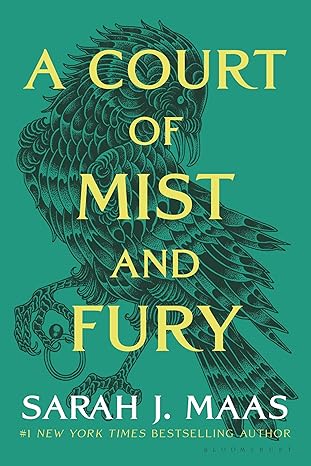
Unlocking the Secrets to Earning $20,000/Month with AI Videos: A Step-by-Step Guide

Are you looking to tap into the lucrative world of YouTube automation? In this friendly guide, we’ll explore how to create and monetize AI-generated videos for free, transforming your passion for storytelling into a thriving business. Let’s dive into the steps that can help you achieve your financial goals with minimal investment!
Table of Contents
- Introduction to YouTube Automation
- Monetizing with Audible
- Generating Voiceovers with AI
- Creating Simple Video Content
- Editing Your Videos with CapCut
- Adding Background Music and Final Touches
- FAQ: Common Questions About AI Video Creation
Introduction to YouTube Automation
YouTube automation is a game-changer for anyone looking to create content without appearing on camera. It allows you to harness the power of technology to produce engaging videos while maintaining your privacy. The process involves utilizing AI tools for voiceovers, script generation, and even image creation. This means you can focus on your creativity and storytelling without the typical hassles of video production.

The Earning Potential of AI Videos
The earning potential from AI-generated videos can be astounding. Some channels are raking in over twenty thousand dollars a month by simply sharing captivating stories. This income primarily comes from ad revenue, affiliate marketing, and sponsorships. The more engaging your content is, the higher your chances of attracting viewers and advertisers.

Overview of the Tutorial
In this tutorial, I will guide you through the entire process of creating a successful YouTube channel focused on scary stories. From selecting a niche to generating content and promoting your videos, every step will be covered. You’ll learn how to leverage AI tools to streamline your workflow and maximize your earnings.

Building Your Free Community Resource
Creating a community resource is essential for sharing tips, tools, and inspiration. I’ve established a free online community where you can access resources, including prompts and templates tailored to the scary stories niche. This supportive environment fosters collaboration and learning, making it easier for newcomers to thrive.

Analyzing the Scary Stories Niche
The scary stories niche is a goldmine for content creators. With millions of potential viewers seeking thrills and chills, the demand is high. This niche not only attracts a dedicated audience but also allows for a variety of content styles, from creepy tales to urban legends.
- High viewer engagement
- Diverse storytelling opportunities
- Strong potential for viral content

Choosing Your Channel Name
Your channel name is your brand identity. It should be memorable, relevant, and reflective of the content you plan to create. I recommend using tools like ChatGPT to brainstorm ideas. A name like “Fearwold” can evoke curiosity and set the tone for your channel.

Monetizing with Audible
One of the most exciting aspects of creating a faceless YouTube channel is the opportunity to monetize through various platforms. Audible, Amazon’s audiobook service, offers a fantastic way to earn additional income. By signing up for the Audible Creator Program, I can earn $5 for every free audiobook someone claims through my referral link.

Even more enticing, I can earn $15 for each person who signs up for a free trial. This is especially beneficial since the trial includes two free audiobooks. By incorporating this into my channel strategy, I can create engaging content that highlights popular scary audiobooks, encouraging viewers to sign up using my link.

To maximize earnings, I can include calls to action in my videos, prompting viewers to check out the audiobooks I recommend. This dual approach not only boosts my earnings but also enriches my content, providing viewers with valuable resources.
Examples of Successful Channels
Success leaves clues, and examining successful channels can provide valuable insights. Channels focused on scary stories have proven to be particularly lucrative. For example, some channels have achieved over a million subscribers by creating simple, engaging content that resonates with audiences.

These channels often feature minimal editing, relying on AI-generated voiceovers and captivating images to tell their stories. This approach allows for rapid content production while still maintaining viewer engagement. By studying their strategies, I can identify what works and adapt it to my style.
- Consistent posting schedule
- Engaging storytelling techniques
- Effective use of keywords and tags

Navigating YouTube’s Monetization Requirements
Understanding YouTube’s monetization requirements is crucial for anyone looking to earn through the platform. To qualify for the YouTube Partner Program, I need to meet specific criteria, including having at least 1,000 subscribers and 4,000 watch hours within the past 12 months.

While these requirements may seem daunting, they are achievable with dedication and strategic content creation. I can leverage AI tools to produce high-quality videos quickly, helping me reach these milestones faster. Additionally, engaging with viewers through comments and social media can foster community and encourage subscriptions.
Creating Your YouTube Channel
Creating a YouTube channel is straightforward. First, I need to sign in to YouTube and navigate to the channel creation page. Here, I can enter my chosen channel name and customize the settings to align with my brand.

Next, I’ll need to optimize my channel description and add links to my social media accounts. This will help viewers connect with me beyond YouTube. A well-crafted channel description should include relevant keywords to improve discoverability.
Designing Channel Art and Profile Pictures
The visual aspect of my channel is crucial for attracting viewers. I can use tools like Canva to create eye-catching channel art and profile pictures. The art should reflect the theme of my content, in this case, scary stories.

For my profile picture, I aim for something that evokes curiosity and aligns with my channel name, “Fearwold.” I can generate unique images through AI tools and then customize them in Canva to ensure they fit perfectly within YouTube’s guidelines.
Crafting Engaging Video Scripts
Writing engaging video scripts is essential for keeping viewers captivated. I can use a formula that incorporates storytelling elements, hooks, and cliffhangers to maintain interest throughout the video. Starting with a compelling hook can draw viewers in, making them want to hear more.

Using AI tools like ChatGPT, I can generate scripts tailored to specific themes or storylines. This not only saves time but also allows me to explore different narrative structures and styles. Keeping the script concise and focused will help maintain viewer attention.
Incorporating sound effects and background music can also enhance the storytelling experience. I can find royalty-free music and sound effects on platforms like YouTube’s Audio Library to accompany my videos. This adds an immersive layer to the content, making it more engaging.

Generating Voiceovers with AI
One of the most crucial steps in creating engaging AI videos is generating high-quality voiceovers. I use an AI tool called Eleven Labs, which allows me to create realistic voiceovers without needing to record my own voice. This not only saves time but also ensures a professional sound in my videos.

To get started, I simply input my script into Eleven Labs. The platform offers a range of voice options, allowing me to select one that fits the tone of my content. After generating the voiceover, I can easily download it for use in my videos.

What’s great about these AI-generated voiceovers is their ability to convey emotion and suspense, which is perfect for the scary stories niche. This adds depth to my storytelling and keeps viewers engaged throughout the video.
Creating Simple Video Content
Once I have my voiceover ready, the next step is to create the visual aspect of my video. The beauty of AI-generated content is that I can create engaging videos with minimal effort. I typically use Canva to design a static image that represents the story being told.

For example, if my story involves a haunted forest, I can create a chilling image that captures that essence. This image will serve as the backdrop for my voiceover, allowing viewers to focus on the story while still having a visual element to engage with.

It’s important to ensure that the visuals align with the tone of the story. A well-chosen image can enhance the overall experience and keep viewers coming back for more. I also recommend using high-quality images to ensure a professional look.
Editing Your Videos with CapCut
Editing is where I can really polish my videos. I use CapCut, a free online tool that makes video editing straightforward and efficient. After uploading my voiceover and the image I created, I can start assembling my video.

In CapCut, I can cut out any unnecessary pauses or gaps in the voiceover to keep the pacing tight. This helps maintain viewer interest and creates a smoother listening experience. I simply use the cut tool to remove any sections that disrupt the flow of the story.

Additionally, I can add text overlays or captions to emphasize key points in my story. This not only makes the video more visually appealing but also accommodates viewers who may be watching without sound.

Adding Background Music and Final Touches
To further enhance the atmosphere of my videos, I always add background music. I source royalty-free tracks from platforms like YouTube’s Audio Library, ensuring that my content remains compliant with copyright regulations. A subtle, eerie soundtrack can significantly elevate the storytelling experience.

When adding music, I ensure that it complements the voiceover without overpowering it. Adjusting the volume levels is crucial. I typically set the music to around -10 decibels, allowing the voiceover to remain clear while still providing an atmospheric backdrop.

Once everything is in place, I do a final review of the video to ensure that the pacing feels right and that the transitions are smooth. This last step is essential for creating a polished final product that I can be proud of.
FAQ: Common Questions About AI Video Creation
What tools do I need to create AI videos?
To create AI videos, you’ll primarily need a voiceover tool like Eleven Labs, a graphic design platform like Canva, and a video editing software such as CapCut. These tools work together to help you produce professional-looking videos efficiently.
How long does it take to create a video?
Creating a video can take as little as seven minutes once you have your script and voiceover ready. The time may vary depending on the complexity of the video and the editing required.
Is it necessary to show my face in the videos?
No, one of the main advantages of using AI for video creation is that you can produce content without appearing on camera. This allows for greater privacy and flexibility in content creation.
Can I monetize my AI videos on YouTube?
Yes, once you meet YouTube’s monetization requirements, you can earn revenue from your AI-generated videos through ads, sponsorships, and affiliate marketing.
What niche should I choose for my AI videos?
The scary stories niche is highly engaging and has a large audience. However, consider your interests and expertise when selecting a niche to ensure that you can create authentic and compelling content.













